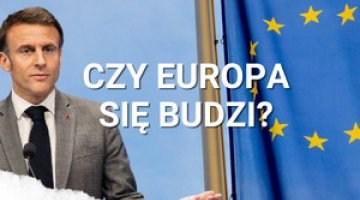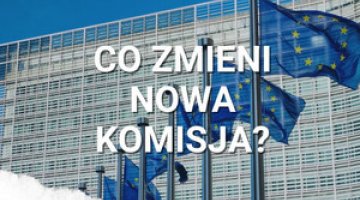No breakthrough: EU discussions on strengthening European security
On 3 February, EU leaders gathered in Brussels for an informal meeting to discuss security and defence policy issues ahead of the forthcoming publication of a White Paper on the future of European defence, scheduled for March. The talks focused on four key issues: the joint development of selected military capabilities, the collective financing of defence investments and projects, the European arms industry, the strengthening of cooperation with security policy partners, and further assistance for Ukraine.
As expected, the meeting did not yield any concrete solutions. The lack of progress on additional defence funding or clear commitments to further military support for Kyiv sends a disappointing signal ahead of the White Paper’s publication and the European Council’s meeting on defence scheduled for June.
Commentary
- EU member states agree that security and defence should be a priority, but they lack a common vision on how to fund these efforts. Less controversial solutions, such as loans from the European Investment Bank, can only partially address urgent and immediate needs related to closing capability gaps. These gaps include air defence, missiles and ammunition, military mobility, and support measures such as transport and satellite reconnaissance. No solutions emerged from key discussions on additional funding for joint defence initiatives, such as issuing common debt, an off-budget mechanism based on contributions, or new EU taxes.
- The idea of issuing joint debt is no longer taboo for some traditionally ‘frugal’ countries, such as Denmark and Finland. However, political uncertainty in other member states – especially ahead of elections in Germany – currently prevents any decision in this regard. At the same time, there are still voices within the EU questioning the rationale for a sharp increase in military spending, both at the national level (Belgium, Spain, Portugal) and at the European level (neutral states, Hungary, and Slovakia). It is also likely that countries with strong defence industries, such as Germany, France, and Italy, will only agree to joint debt if they receive a sufficient ‘return’ in the form of procurement contracts. France has been particularly vocal on this issue, insisting that European debt should exclusively finance weaponry and military equipment produced within the EU.
- There is a prevailing sense of anticipation regarding cooperation with the EU’s key security partners: the United States and the United Kingdom. EU leaders have authorised European Council President António Costa to adopt a conciliatory tone in commenting on transatlantic relations, despite concerns over a potential trade war. The future of EU-NATO cooperation will depend on the broader state of EU-US relations, as well as the positions of certain member states, such as Turkey, France, and Greece. However, officials from both organisations – particularly Ursula von der Leyen, Kaja Kallas, and Mark Rutte – appear determined to strengthen ties and establish a clear division of responsibilities. The fact that the British Prime Minister participated in part of the meeting – the first such instance since Brexit – has raised hopes for closer cooperation between London and the EU, including on security matters. Talks are underway regarding a potential EU-UK security agreement, though both sides remain vague on details. London is keen to participate in EU initiatives supporting the European defence industry, which would enable greater collaboration between British and EU arms manufacturers. However, France remains sceptical, not only due to ongoing trade disputes with the UK but also because of disagreements over tightening migration controls in the English Channel. Meanwhile, fisheries remain an unresolved issue in EU-UK relations.
- EU leaders’ discussions also failed to provide new momentum for further military aid to Ukraine. Current support is being delivered through the European Peace Facility (EPF), which has been supplemented by a portion of the profits from frozen Russian assets – so far totalling €1.4 billion. Unlike member state contributions, these funds are not subject to a Hungarian veto. Additionally, Ukrainian troops continue to receive training under the EUMAM mission. The EU’s macroeconomic assistance to Kyiv – including loans from the ERA (Extraordinary Revenue Acceleration Loans for Ukraine) mechanism, secured by interest generated from Russian assets – could also be partially allocated to military spending. The EU’s share of these loans will amount to €18.1 billion in 2025. However, there is no common position on how to further strengthen Ukraine’s military capabilities, particularly in the event of a ceasefire or a reduction in US military support. The ongoing debate over a potential joint EU defence debt is also relevant to Ukraine, as part of the borrowed funds could be used to finance military aid for the country.




